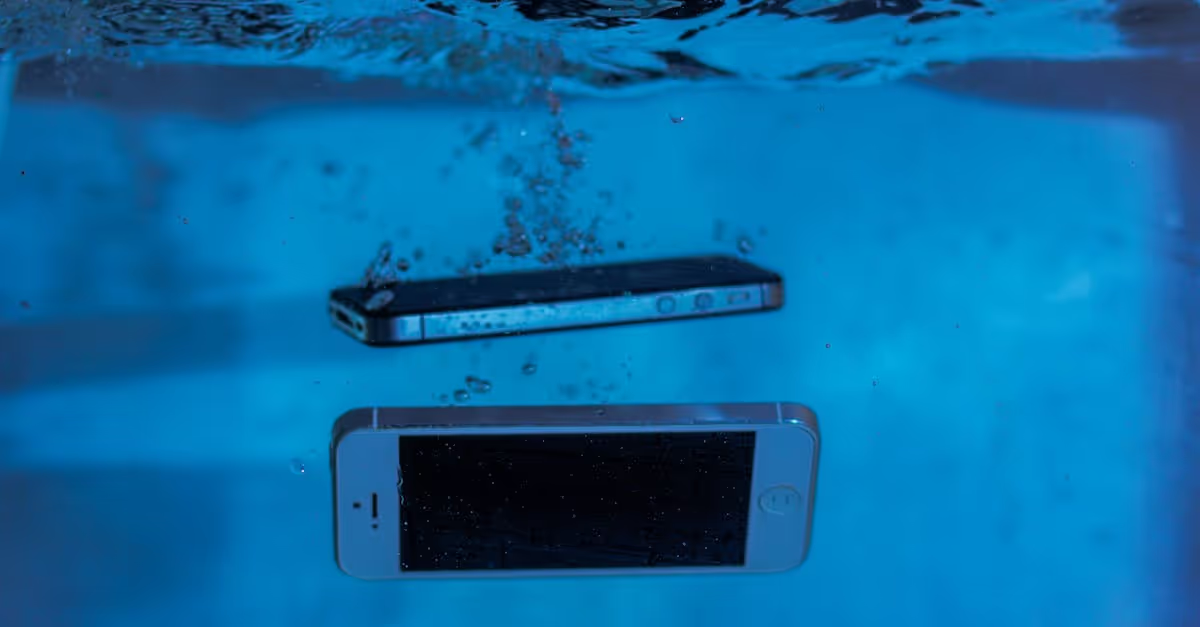Key Takeaways
- Understanding Alkalinity: Alkalinity, primarily from bicarbonates, carbonates, and hydroxides, stabilizes pH levels, keeping pool water clear and safe.
- Testing is Essential: Regular testing of alkalinity levels using a reliable pool test kit is crucial to prevent scaling and corrosion, ensuring a healthy swimming environment.
- Ideal Alkalinity Range: Maintain alkalinity levels between 80 and 120 parts per million (ppm) for optimal pool health and to avoid issues such as cloudy water and equipment damage.
- Adjusting Alkalinity: Use sodium bicarbonate to raise alkalinity and muriatic acid to lower it; always follow recommended amounts and safety precautions during the adjustment process.
- Preventing Damage: Proper alkalinity management prevents scaling and corrosion, thus extending the lifespan of pool surfaces and equipment while enhancing the overall swimming experience.
- Regular Maintenance: Incorporate weekly testing and adjustments into your maintenance routine to catch fluctuations early, ensuring crystal clear and inviting pool water.
Maintaining the right alkalinity in our pool water is crucial for ensuring a safe and enjoyable swimming experience. Did you know that improper alkalinity levels can lead to scaling and corrosion, potentially damaging our pool equipment and surfaces? Studies show that nearly 50% of pool owners overlook this vital aspect of water chemistry, resulting in costly repairs and maintenance.
In this guide, we’ll explore the importance of testing and adjusting alkalinity levels. By understanding how to keep our pool water balanced, we can prevent unwanted issues and extend the life of our pool. Let’s dive into the essential steps for testing alkalinity and making the necessary adjustments to keep our oasis crystal clear and inviting.
Understanding Alkalinity in Pool Water
Alkalinity plays a pivotal role in maintaining balanced pool chemistry. It acts as a buffer against pH changes, enabling us to keep our pool water clear and inviting.
What Is Alkalinity?
Alkalinity refers to the water's capacity to resist changes in pH. It's primarily due to bicarbonates, carbonates, and hydroxides present in the water. These substances absorb acids, stabilizing the overall pH and preventing drastic fluctuations. Proper alkalinity levels typically range from 80 to 120 parts per million (ppm). If we've ever experienced issues like cloudy water or acidic sensations during swimming, it's often a direct result of improper alkalinity.
Importance of Alkalinity for Pool Health
Maintaining the right alkalinity levels is essential for several reasons. High or low alkalinity can lead to problems like scaling, which deposits minerals on pool surfaces, and corrosion, which damages equipment and plumbing. Picture this: our pool’s plumbing is like a busy highway, functioning smoothly until there’s a traffic jam (in this case, scaling or corrosion). Allowing proper alkalinity to act as a traffic controller keeps everything flowing freely.
Testing Alkalinity Levels
Testing the alkalinity levels in our pool water is crucial for maintaining balanced chemistry. We want our pool to be safe and inviting for everyone.
Tools Needed for Testing
To test alkalinity, we need specific tools:
- Pool test kit: Choose a reliable kit, like a Taylor test kit or a Poolmaster 5-Way Test Kit.
- Reagents: Use the right reagents, such as:
- Thiosulfate (R-0007 or Solution #4)
- Total alkalinity indicator (R-0008 or Solution #5B)
- Sulfuric acid (R-0009 or Solution #3)
These tools help us get accurate readings. Accurate testing prevents scaling and corrosion, protecting our pool.
Step-by-Step Testing Process
Here’s how to test the alkalinity levels effectively:
- Collecting the sample: Grab a water sample from at least 18 inches below the surface. This gives us a better idea of the pool's chemistry.
- Testing the sample: Follow the instructions for the test kit. Add the reagents in the specified order, swirl the sample gently, and compare the color to the chart provided.
- Interpreting results: We want our alkalinity levels between 80 to 120 ppm. If it's outside this range, adjustments may be necessary.
Adjusting Alkalinity Levels
Maintaining proper alkalinity levels is crucial for pool water balance. When alkalinity is off, we face issues like scaling and corrosion. Let’s dive into how to adjust these levels effectively.
Raising Alkalinity
To raise alkalinity, we use sodium bicarbonate, commonly known as baking soda. This method is straightforward and effective. We add the recommended amount—typically 1.5 pounds for every 10,000 gallons of water—to increase alkalinity by about 10 ppm.
After adding baking soda, we need to run the pool pump for at least 6 hours to mix it thoroughly. Testing alkalinity after 24 hours gives us an accurate reading. Remember, waiting too long can lead to unnecessary adjustments.
If we aim for an ideal alkalinity range of 80 to 120 ppm, then monitoring closely ensures a smooth swimming experience. Happy pool days are just a scoop of baking soda away!
Lowering Alkalinity
Lowering alkalinity requires a different approach. We can use muriatic acid or sodium bisulfate. For muriatic acid, we add approximately 1 quart per 10,000 gallons to reduce alkalinity by about 10 ppm.
Safety comes first. Always wear protective gear and follow the manufacturer’s instructions. Adding acid should be done slowly and gradually. We pour it into the pool water, ensuring we add it near a return jet for even distribution.
Preventing Scaling and Corrosion
Maintaining the right alkalinity level in our pool water prevents scaling and corrosion. This helps keep our pools safe and enjoyable for everyone.
Effects of Improper Alkalinity
Improper alkalinity leads to significant issues in our pools. Low alkalinity can cause water to become acidic, which damages surfaces and equipment. High alkalinity creates cloudy water, making it difficult to see. Surfaces can also develop unattractive scaling. Scaling may reduce the lifespan of our pumps and filters, leading to costly repairs. Proper alkalinity levels typically range from 80 to 120 parts per million (ppm). If we ignore alkalinity levels, we risk facing these problems and detracting from our pool experience.
Best Practices for Maintenance
Our maintenance routine should include regular testing and adjustments. Testing alkalinity at least once a week helps us stay on top of any fluctuations. First, we fill a water sample in a comparator and add the corresponding reagents as explained previously. If alkalinity needs adjusting, we can use sodium bicarbonate to raise it. For lowering alkalinity, muriatic acid works effectively. Remember to follow safety precautions when handling these chemicals.
Incorporating a maintenance habit benefits our pools and maximizes enjoyment. Who wouldn't want to dive into clear, balanced water? By consistently monitoring alkalinity, we protect our investment and enhance our overall swimming experience.
Conclusion
Maintaining proper alkalinity in our pool water is essential for a safe and enjoyable swimming experience. By regularly testing and adjusting alkalinity levels we can prevent costly scaling and corrosion that threaten our pool's integrity.
With the right tools and knowledge we can easily manage our water chemistry. Let's commit to a routine that includes testing alkalinity at least once a week. This proactive approach not only protects our investment but also ensures clear and inviting water for everyone to enjoy.
By prioritizing alkalinity we create a healthier swimming environment and extend the life of our pool equipment. Let's make the effort to keep our pools in top shape.
Frequently Asked Questions
What is pool alkalinity and why is it important?
Alkalinity refers to the water’s ability to resist pH changes, primarily from bicarbonates, carbonates, and hydroxides. Maintaining proper alkalinity (80 to 120 ppm) is crucial to prevent issues like cloudy water, scaling, and corrosion that can damage the pool's surfaces and equipment.
How often should I test my pool's alkalinity?
It is recommended to test your pool's alkalinity at least once a week. Regular testing helps you catch fluctuations early, preventing problems like acidic water or cloudy conditions, ensuring a safe and enjoyable swimming experience.
How do I test the alkalinity levels in my pool?
To test alkalinity, use a reliable pool test kit. Collect a water sample from below the surface, add the provided reagents as instructed, and compare the results against the kit's color chart to determine the alkalinity level.
What should I do if my pool's alkalinity is too low?
If alkalinity is below 80 ppm, raise it by adding sodium bicarbonate (baking soda). For every 10,000 gallons of water, add 1.5 pounds to increase alkalinity by about 10 ppm and run the pool pump for at least 6 hours.
How can I lower high alkalinity levels in my pool?
To reduce high alkalinity (above 120 ppm), use muriatic acid or sodium bisulfate. Follow the product's instructions for the correct amount to use, and take safety precautions while handling these chemicals to avoid any accidents.
What are the risks of neglecting pool alkalinity?
Neglecting alkalinity can lead to several issues, including scaling, corrosion of pool equipment, and cloudy water. Approximately 50% of pool owners overlook this aspect, resulting in costly repairs and an unpleasant swimming experience.
What maintenance practices should I follow for pool alkalinity?
Regularly test alkalinity, ideally weekly, and adjust levels as needed using sodium bicarbonate to raise and muriatic acid to lower. Consistent monitoring helps maintain balanced water chemistry and prolongs the life of your pool and equipment.






